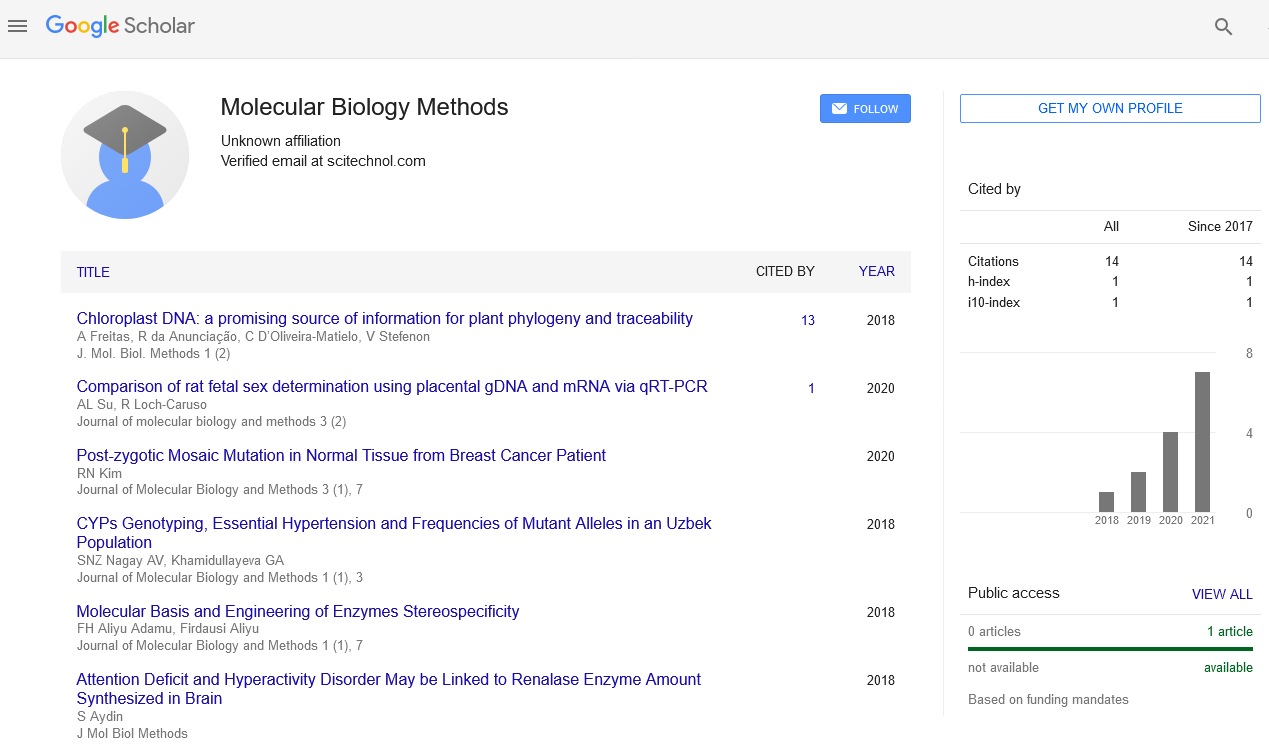Perspective, J Mol Biol Methods Vol: 7 Issue: 3
Molecular Cloning: A Comprehensive Guide to Techniques and Strategies
Pankaj Belmont*
*Corresponding Author: Pankaj Belmont,
Department of Cell and Developmental Biology, University of Illinois at Urbana-
Champaign, Urbana, United States of America
E-mail: belmontpankaj@illinois.edu
Received date: 26 August, 2024, Manuscript No. JMBM-24-151576;
Editor assigned date: 28 August, 2024, PreQC No. JMBM-24-151576 (PQ);
Reviewed date: 11 September, 2024, QC No. JMBM-24-151576;
Revised date: 18 September, 2024, Manuscript No. JMBM-24-151576 (R);
Published date: 25 September, 2024 DOI: 10.4172/JMBM.1000173
Citation: Belmont P (2024) Molecular Cloning: A Comprehensive Guide to Techniques and Strategies. J Mol Biol Methods 7:3 .
Description
Molecular cloning is a fundamental technique in molecular biology. This powerful tool has revolutionized the fields of genetics, biotechnology and medicine, providing a means to study genes, produce proteins and develop new therapies. The process of molecular cloning typically begins with the identification of a gene of interest. This gene can be derived from any organism, including bacteria, plants, or animals. Techniques such as Polymerase Chain Reaction (PCR) are commonly employed to amplify the target DNA sequence, ensuring that there is enough material for further manipulation.
Once the gene is isolated, it must be inserted into a suitable vector, which is a DNA molecule capable of carrying the gene into a host cell. Vectors can be plasmids, which are small circular DNA molecules commonly found in bacteria, or viral vectors that can infect host cells. The choice of vector depends on the intended application, such as whether the goal is to express the protein in bacteria, yeast, or mammalian cells. The vector typically contains essential elements such as an origin of replication, a selection marker (usually an antibiotic resistance gene) and a promoter that drives the expression of the inserted gene.
The insertion of the gene into the vector is achieved through a process called ligation. This involves using enzymes known as restriction endonucleases to cut both the vector and the DNA of interest at specific sequences, creating compatible ends that can be joined together. Once the gene is ligated into the vector, the recombinant DNA molecule is ready to be introduced into a host organism. This is commonly accomplished through transformation in bacteria, where the recombinant plasmid is taken up by competent bacterial cells. Alternatively, methods like electroporation or microinjection can be used for eukaryotic cells.
After transformation, the next important step is the selection of successfully transformed cells. This is where the selection marker plays an important role. For instance, bacteria that have taken up the plasmid with an antibiotic resistance gene can be grown on selective media containing that antibiotic, allowing only those cells that have successfully incorporated the plasmid to survive.
The successful cloning of a gene opens the door to numerous applications. One of the most significant uses of molecular cloning is gene expression studies, where scientists can produce large amounts of a specific protein for research or therapeutic purposes. For example, the production of insulin for diabetes treatment involves the cloning of the insulin gene into a bacterial vector, allowing bacteria to produce human insulin that can be harvested and purified. Molecular cloning also plays an important role in the development of Genetically Modified Organisms (GMOs).
In conclusion, molecular cloning is a powerful and versatile technique that has transformed the landscape of biological research and biotechnology. From producing therapeutic proteins to creating genetically modified organisms and advancing gene therapy, its applications are vast and varied. As technology continues to evolve, the potential for molecular cloning to contribute to scientific discovery and societal benefit remains significant.
 Spanish
Spanish  Chinese
Chinese  Russian
Russian  German
German  French
French  Japanese
Japanese  Portuguese
Portuguese  Hindi
Hindi 